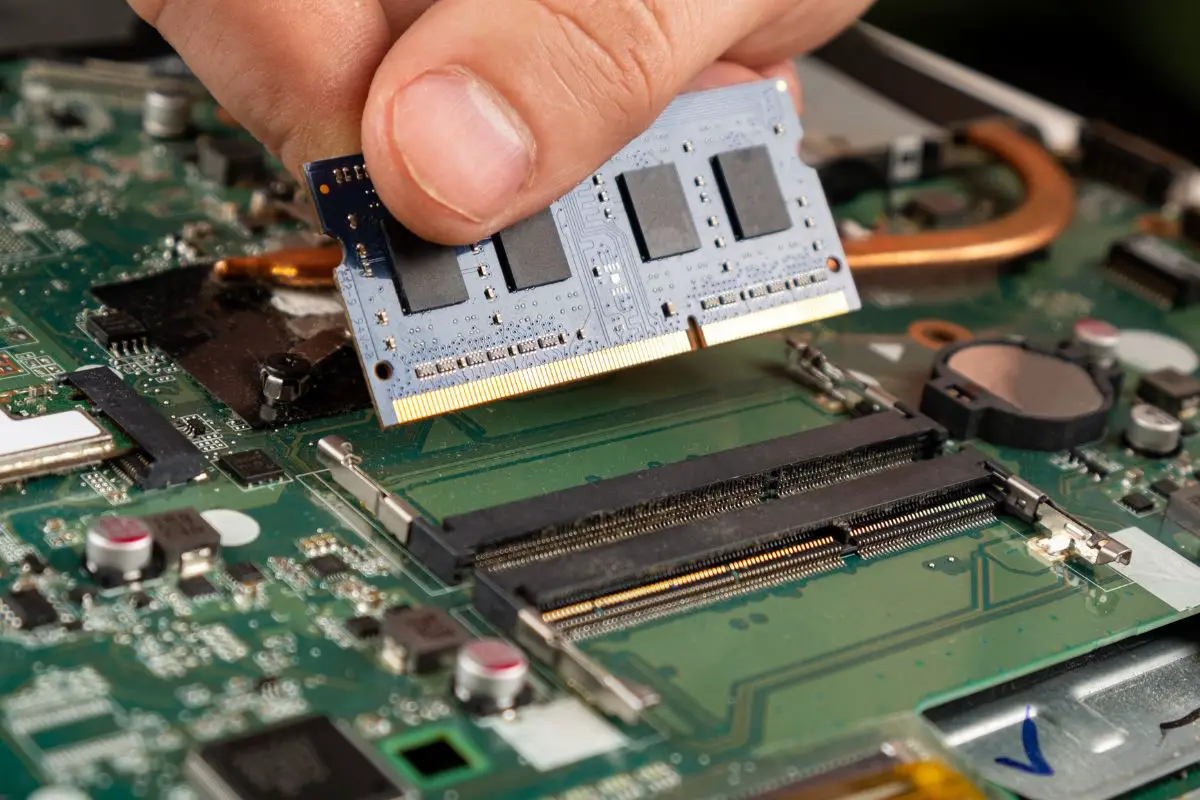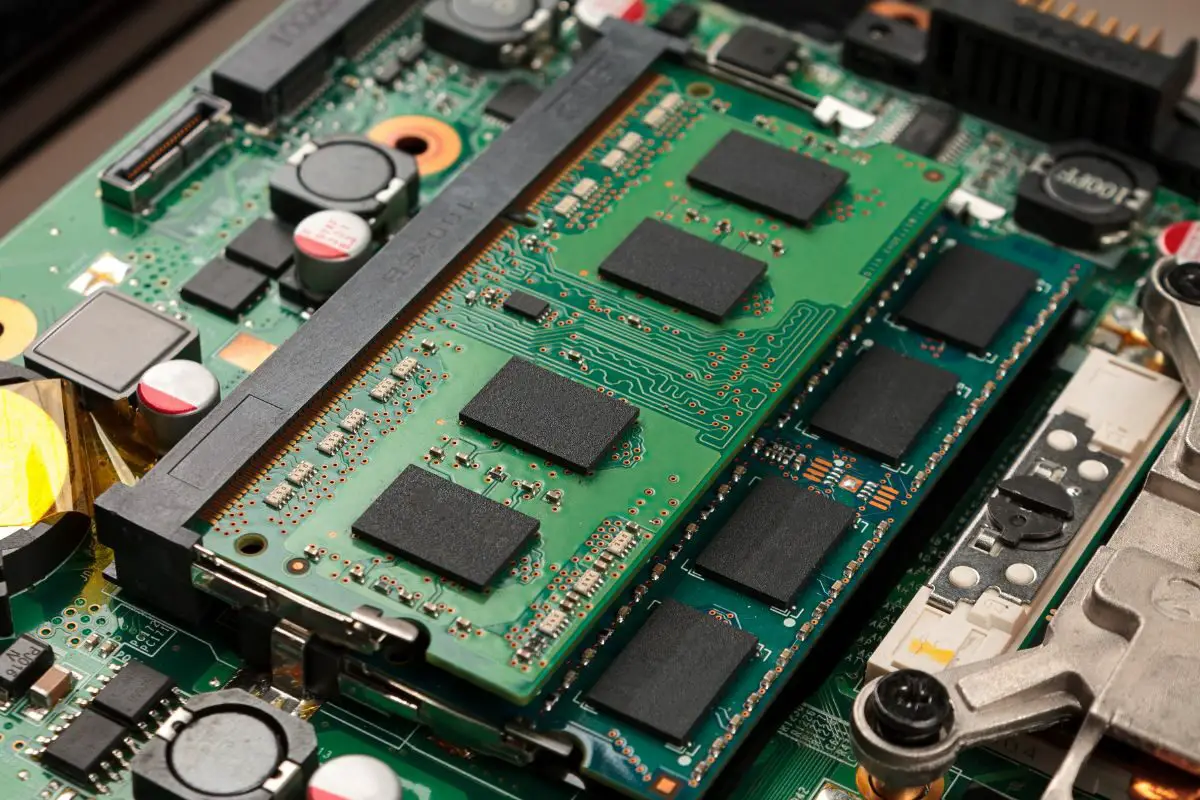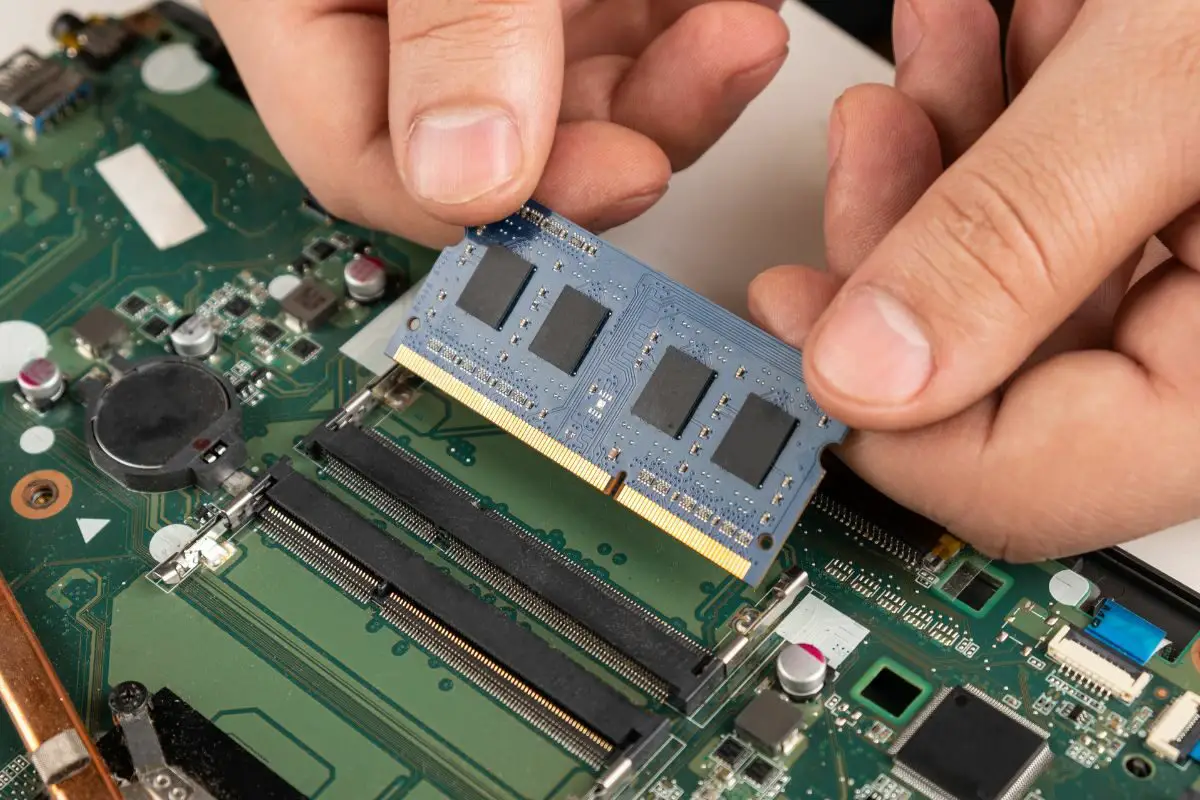
You can't add external RAM to your laptop. But you can upgrade your laptop's RAM internally. You'll have to open its case up to do this. First check whether your laptop has soldered its RAM, though, and how much its maximum RAM capacity is.
You should be able to find its maximum RAM capacity from its spec sheet. My sister who's a bit of a newb needed help with this recently. She wanted to upgrade to 32 GB of memory, but couldn't figure out how to check whether this was possible.
I ran her through how to check this, and how to add memory modules to her laptop's RAM. So, I thought about telling you how to upgrade your laptop's RAM too.
Contents
You can't add RAM externally - your laptop's memory is installed directly into its motherboard. But all is not lost, as you can try and upgrade your internal RAM.
There are 2 steps to upgrading your internal RAM.

It's important that you first check whether your laptop RAM is soldered into place. There's no way you would be able to add more memory, or do any of what I'm about to tell you if this is the case. You can actually check this from your laptop's manual.
Once you're sure that you're good to go, you can check the below things.
Make sure that you find the maximum RAM that your laptop can handle. You don't have to do much to find this. Your computer's manual will have this information. However, if you want, you can also use sites, like CPU-Z.
Let's say that your laptop can handle a maximum of 16 GB RAM. This means that you won't be able to go above this and install any RAM cards higher than 16 GB.
Once you've figured your laptop's maximum RAM capacity, you need to check the type of memory stick that you're using. This will dictate the type of RAM sticks that you can get (like DDR2, DDR3, or DDR4).
You can actually check what type your laptop's memory is from its manual, or get this information from sites like CPU-Z, once again.
Lastly, you need to find out how many available RAM slots your laptop has. If it has two RAM slots, and one of them is in use, you'll have to try and upgrade its memory with the one slot that's available.
Let's say you want to upgrade your 16 GB of RAM to 32 Gigs. Now, if you only have one RAM slot available, you'll have to use a 32 GB RAM stick instead of two 16 GB ones.
Since you can't add external RAM to a laptop, you will either have to upgrade your memory internally, or use some kind of a workaround, like ReadyBoost and a USB flash drive.
The first method is opening your laptop up, and adding the RAM sticks yourself. As you can imagine, it's a bit of work for a newbie, as you need to open your laptop case up. But I've made the process to upgrade your laptop's RAM as easy as possible:
Yes, adding external RAM to laptops would be easier than opening up your laptop case. But at the end of the day, the process to follow is not that hard. You can check this tutorial I've added for more guidance.
If you don't want to open your laptop up, that's totally fine. You can instead use the ReadyBoost software as a workaround. It's a pre-built Windows feature, and is completely free. It essentially lets you plug in a USB flash drive, and send your computer memory to it.
This is a bit of a workaround, though. You won't be adding to the existing RAM, but just providing a location to store frequently accessed data. This should give your PC a bit of a performance boost, as your tasks can be accessed faster.
Here's how you can use the tool to work on your laptop's RAM:
I'd say if you're just using your laptop for everyday tasks, like browsing the internet and doing some light gaming, you'll be perfectly fine with just 8 gigs of memory.
But if you are going to be doing a bit of hardcore gaming and maybe some video editing, then you'll need at least 16 GB of memory.
Lastly, I'd recommend 32 GB if you are going to be using more challenging programs, like Photoshop all the time.
Although you can upgrade 8 GB RAM to 16 GB of RAM, there are a few factors, like RAM speed and slot availability that you have to consider. From them, one of the most important is compatibility. You basically have to make sure that your laptop can handle 16 GB of RAM. You'll have to check your laptop's manual, or computer's hardware information online for this.
Of course, whether you'l be able to add more RAM depends on if your Laptop's RAM is soldered into place too. If it is, it's directly connected to your motherboard, and the power supply. So, you won't be able to install RAM like you want.
Generally speaking, your processing speed increases when you have more RAM. So, your laptop will be able to do tasks more efficiently. You'll basically be increasing the speed at which your computer's memory transfers information from one component to the other.
There are laptops that have 128 GB that are commercially available. However, most users, even if they do graphic-intensive tasks, won't need 128 GB of RAM. It's really only suitable for users who use their computer for niche tasks, like artificial intelligence, or 3D modeling.
But in the future, there is always the possibility that these 128 GB laptops become more and more common.
If you are using 100% of your laptop RAM, this means that your system's memory is fully being utilized. So, there's no memory left for the other aspects of your laptop's performance. If you're regularly running complex tasks, like video rendering, then getting close to maxing your laptop's RAM isn't a surprise.
However, if your laptop's RAM is constantly being used at 100%, no matter the type of tasks that you are using, then it's clear that you have insufficient memory on your computer. You'll be stuck with a bunch of different issues because of this, like slow response times, application crashes, and freezing. You can check what I mentioned earlier on how to install RAM internally to fix this.

Yes, you can upgrade the Random Access Memory on your laptop. But adding external RAM is not something that you can do. You'll have to try and internally add the additional memory, instead.
But to upgrade your laptop's RAM, you will first need to check whether your laptop supports additional RAM, and how big of a memory stick you can add.
Not all laptops let you change the existing RAM, too - they can have their memory slots soldered into their motherboard. You should always check this, before trying to find out the maximum amount of memory that you can add. Also, you can use the USB flash drive workaround too.
Once you've checked all of this, it's pretty easy to add RAM to a laptop. I ran through all the steps to follow in-depth earlier. Hopefully, you found them and this guide helpful in adding RAM to a laptop useful.
